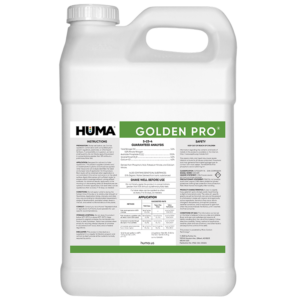OM NITRO
Benefits of Use:
- Provides quick crop response and can be applied just prior to crop need
- Can be applied foliarly (according to label directions) without risk of phytotoxicity
- Resists nitrogen leaching and volatilization to remain stable and available to plant roots
- Moves with irrigation water to aid in proper placement
- Can be effectively tank-mixed with other organic crop inputs
FAQs
Related Products
Related Case Studies

Huma® Program Increases Peanut Yield Under Severe Conditions
Objective This field trial was conducted in order to compare peanut crop yields and return on investment (ROI) obtained when Huma® products were applied in various combinations in comparison with a grower standard program. Materials & Methods This trial on peanut (Arachis hypogaea, Var. GA-12Y) was conducted in Memphis, Tenn., in a randomized complete block

Huma® Fertilizer Program Improves Potato Yield by 5%, With 200% ROI
Background Huma® liquid fertilizer programs with Micro Carbon Technology® provide growers with efficient crop nutrients via foliar spray or irrigation at the exact time crops need them. Precision timing of efficient nutrition provides better crop yield and quality. Objective The focus of this study was to assess how the efficient Huma® nutritional products affect potato

Super Phos® Multi-State Midwest Trial
Background Application of phosphorus (P) fertilizers—such as triple super phosphate (TSP), monoammonium phosphate (MAP), diammonium phosphate (DAP), liquid ammonium polyphosphate (APP), and other forms—can be inefficient and, at times, not environmentally friendly. A technology that can mitigate these P fertilizer challenges without compromising yield and return on investment is highly desirable. Huma® Super Phos® is
Related Blog Posts

NITROGEN vs. CARBON – NEW AND IMPORTANT INFORMATION
For decades the conventional thinking has been that applications of synthetic nitrogen fertilizers help enhance soil carbon levels by stimulating soil microbes to feed on organic matter from crop residues. New research indicates that, in fact, the opposite may be true.A group of scientists at University of Illinois says that research from the Morrow Plots,

This Week in Ag #72
How do you just find 1.5 million acres? That’s like finding two Rhode Islands. But that’s what USDA did on Friday, when they upped US corn acreage to 91.5 million, from the 90 million acres estimated in March. Predictably, that sent the market tumbling down. New corn prices are now trading in the $3s. These are

This Week in Ag #83
Grandpa Fred never saw me. Despite the fact I was at his house nearly every day for over two decades. That’s because he was blind. From a farm accident. An anhydrous hose burst and shot the gas in his eyes.









